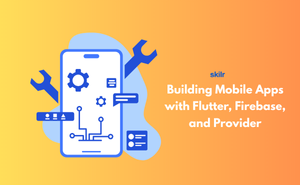👇 CELEBRATE CLOUD SECURITY DAY 👇
00
HOURS
00
MINUTES
00
SECONDS

The Building Mobile Apps with Flutter, Firebase, and Provider certification helps learners build modern, feature-rich mobile applications. With Flutter, developers can design beautiful cross-platform apps using a single codebase. Firebase serves as the backend engine, offering tools for login systems, real-time data updates, file storage, and app performance tracking. Provider plays the role of managing state within the app, ensuring smooth data flow and better app performance.
By mastering these technologies, professionals can build apps that are both visually appealing and highly functional. From user authentication to live updates and cloud integration, this skill set allows individuals to create apps that scale easily while staying efficient and user-friendly.
Who should take the Exam?
This exam is ideal for:
Domain 1 - Introduction to Flutter, Firebase, and Provider
Domain 2 - Flutter Development Basics
Domain 3 - Dart Language Fundamentals
Domain 4 - Firebase Integration with Flutter
Domain 5 - Provider for State Management
Domain 6 - Building App Features with Firebase
Domain 7 - Testing and Debugging Apps
Domain 8 - Deployment and Publishing
Domain 9 - Future Trends in Flutter and Firebase Development
Industry-endorsed certificates to strengthen your career profile.
Start learning immediately with digital materials, no delays.
Practice until you’re fully confident, at no additional charge.
Study anytime, anywhere, on laptop, tablet, or smartphone.
Courses and practice exams developed by qualified professionals.
Support available round the clock whenever you need help.
Easy-to-follow content with practice exams and assessments.
Join a global community of professionals advancing their skills.
Absolutely, clients demand cross-platform apps with real-time features.
E-commerce, education, finance, healthcare, and social networking.
Mobile app developer, Flutter-Firebase specialist, full-stack mobile developer.
The demand is growing as businesses prefer fast, scalable, and cross-platform solutions.
Flutter is used to create cross-platform apps for Android and iOS with a single codebase.
No, Dart is beginner-friendly and similar to languages like Java or JavaScript.
Yes, they are scalable and used by many startups and businesses.
Students, developers, freelancers, and entrepreneurs aiming to build mobile apps.
Firebase is Google’s cloud-based platform offering backend services like authentication, databases, and analytics.
Not mandatory, but basic programming knowledge is recommended.